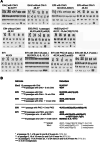Derivation of Naïve Human Embryonic Stem Cells Using a CHK1 Inhibitor
- PMID: 37702917
- PMCID: PMC10662141
- DOI: 10.1007/s12015-023-10613-2
Derivation of Naïve Human Embryonic Stem Cells Using a CHK1 Inhibitor
Abstract
Embryonic development is a continuum in vivo. Transcriptional analysis can separate established human embryonic stem cells (hESC) into at least four distinct developmental pluripotent stages, two naïve and two primed, early and late relative to the intact epiblast. In this study we primarily show that exposure of frozen human blastocysts to an inhibitor of checkpoint kinase 1 (CHK1) upon thaw greatly enhances establishment of karyotypically normal late naïve hESC cultures. These late naïve cells are plastic and can be toggled back to early naïve and forward to early primed pluripotent stages. The early primed cells are transcriptionally equivalent to the post inner cell mass intermediate (PICMI) stage seen one day following transfer of human blastocysts into in vitro culture and are stable at an earlier stage than conventional primed hESC.
Keywords: CHK1 inhibitor; Epigenetic; Naïve; PICMI; Primed; hESC.
© 2023. The Author(s).
Conflict of interest statement
The authors have no relevant financial or non-financial interests to disclose.
Figures


Similar articles
-
Derivation of trophoblast stem cells from naïve human pluripotent stem cells.Elife. 2020 Feb 12;9:e52504. doi: 10.7554/eLife.52504. Elife. 2020. PMID: 32048992 Free PMC article.
-
Transcriptional landscape changes during human embryonic stem cell derivation.Mol Hum Reprod. 2018 Nov 1;24(11):543-555. doi: 10.1093/molehr/gay039. Mol Hum Reprod. 2018. PMID: 30239859
-
Moving toward totipotency: the molecular and cellular features of totipotent and naive pluripotent stem cells.Hum Reprod Update. 2025 Jul 1;31(4):361-391. doi: 10.1093/humupd/dmaf006. Hum Reprod Update. 2025. PMID: 40299455 Review.
-
Human embryonic stem cell-derived Sertoli cells as an immune modulator of cell transplantation therapy in a diabetic mice model.Stem Cell Res Ther. 2025 Jul 26;16(1):403. doi: 10.1186/s13287-025-04532-x. Stem Cell Res Ther. 2025. PMID: 40713888 Free PMC article.
-
The Black Book of Psychotropic Dosing and Monitoring.Psychopharmacol Bull. 2024 Jul 8;54(3):8-59. Psychopharmacol Bull. 2024. PMID: 38993656 Free PMC article. Review.
Cited by
-
Acoustic vibration promotes in vitro expansion of human embryonic stem cells.Am J Stem Cells. 2024 Jun 15;13(3):143-151. doi: 10.62347/PJFC2708. eCollection 2024. Am J Stem Cells. 2024. PMID: 39021373 Free PMC article.
References
-
- Moody JD, Levy S, Mathieu J, Xing Y, Kim W, Dong C, Tempel W, Robitaille AM, Dang LT, Ferreccio A, Detraux D, Sidhu S, Zhu L, Carter L, Xu C, Valensisi C, Wang Y, Hawkins RD, Min J, Moon RT, Orkin SH, Baker D, Ruohola-Baker H. First critical repressive H3K27me3 marks in embryonic stem cells identified using designed protein inhibitor. Proceedings of the National Academy of Sciences. 2017;114(38):10125–10130. doi: 10.1073/pnas.1706907114. - DOI - PMC - PubMed
-
- Mathieu J, Detraux D, Kuppers D, Wang Y, Cavanaugh C, Sidhu S, Levy S, Robitaille AM, Ferreccio A, Bottorff A, McAlister L, Somasundaram L, Artoni F, Battle S, Hawkins RD, Moon RT, Ware CD, Paddison PJ, Ruohola-Baker H. Folliculin regulates mTORC1/2 and WNT pathways in early human pluripotency. Nature Communications. 2019;10(1):632. doi: 10.1038/s41467-018-08020-0. - DOI - PMC - PubMed
MeSH terms
Substances
LinkOut - more resources
Full Text Sources
Other Literature Sources
Miscellaneous

